I Saw It (1982) by Keiji Nakazawa.
What’s this then?
This is one of the first Japanese comics translated into English, but the connection to Eclipse Comics, which is the subject of this blog series, is pretty nebulous.
Nowhere in this book is Eclipse Comics mentioned, but that’s not unique in Eclipse’s history. catherine ⊕ yronwode’s web site lists it, though, which usually means that Eclipse were responsible for the distribution of the book to comics stores, so I’m guessing that that’s what happened here. And ads like this seems to support that, even if that ad was published five years later…
Anyway, this is a 48 a page newsprint comic book, done with flat “mechanical” colours. It was apparently printed in black and white originally in Japan, but was (perhaps?) coloured specially for the American edition.
I had this comic when I was, like, 14, and it made a huge impression on me. Keiji Nakazawa’s style is so straightforward and non-dramatic that nothing really prepares you for the horror that’s to come. This book is, of course, about the bombing of Hiroshima, which happened when Keiji Nakazawa was a child (and living in that city).
These pages retain all their shock value today.
And while Nakazawa depicts the heart-breaking things that happened to his family, the book doesn’t dwell on the bombing itself.
We’re quickly in the aftermath where Nakazawa unsentimentally tries to convey to the readers how a child reacts to being in this situation, and he’s so successful in just showing us without editorialising or idealising.
The last half of the book is about surviving as a dirt poor family after the war, and deals mostly with the author’s aspirations towards becoming a comic book artist, so while we’re still in autobiographical mode, it’s a pacing problem. After all the horror we’ve witnessed, it can be a bit hard to take in Nakazawa triumphs in being hired to draw comics for boy’s magazines.
But he emotionally ties it all together by devoting much of the story to his mother’s fate.
I thought that this was a wonderful comic book when I was 14, and I haven’t changed my mind. But I do think that it feels rushed… it could do with being expanded. Which is what Nakazawa did: He created a four volume epic, Barefoot Gen, that retells the same story over many, many more pages.
I remember reading the first volume of that in translation to some language or other in the 80s, but I don’t remember much about it otherwise. Hm… Oh, I see that Last Gasp published a new ten volume edition a decade ago. Perhaps I should buy that one…
So that’s… almost 3000 pages that (I think) covers more or less the same storyline as these 48 pages? Geez. No wonder this felt a bit cramped.
Ah, Leonard Rifas published a couple of volumes back in the 80s, too. His Educomics was an attempt at getting comics accepted in schools as teaching materials, so the ads mention buying complete class sets of these books.
[Edit some months later: I’ve now read the first two volumes of Barefoot Gen, and it’s… I don’t know a polite way to put this. It’s crap. It’s total, undiluted crap. It’s the worst kind of relentless melodrama, where everything that happens is awful, but that’s not enough: It has to be awful in five different ways at the same time to wring every possible drop of literally unbelievable drama out of every moment. I know that Keiji Nakazawa meant this as a piece of propaganda aimed at teaching children that war’s, like, bad, and Japan, like, sucks, but I’m afraid it has a paradoxical opposite effect: As nothing that happens seems believable, I found myself doubting the narrative more and more, and by the second book I was starting to ponder whether Hiroshima had even existed. Did Japan? Does the Earth? Do I? And that’s when I knew that I’d never read the final eight volumes of that unconscionably over-rated steaming pile. It’s like everybody responds to the idea of the book existing instead of the contents within. I Saw It, on the other hand, remains a pretty powerful book, but Keiji Nakazawa only had 40 pages in him.]

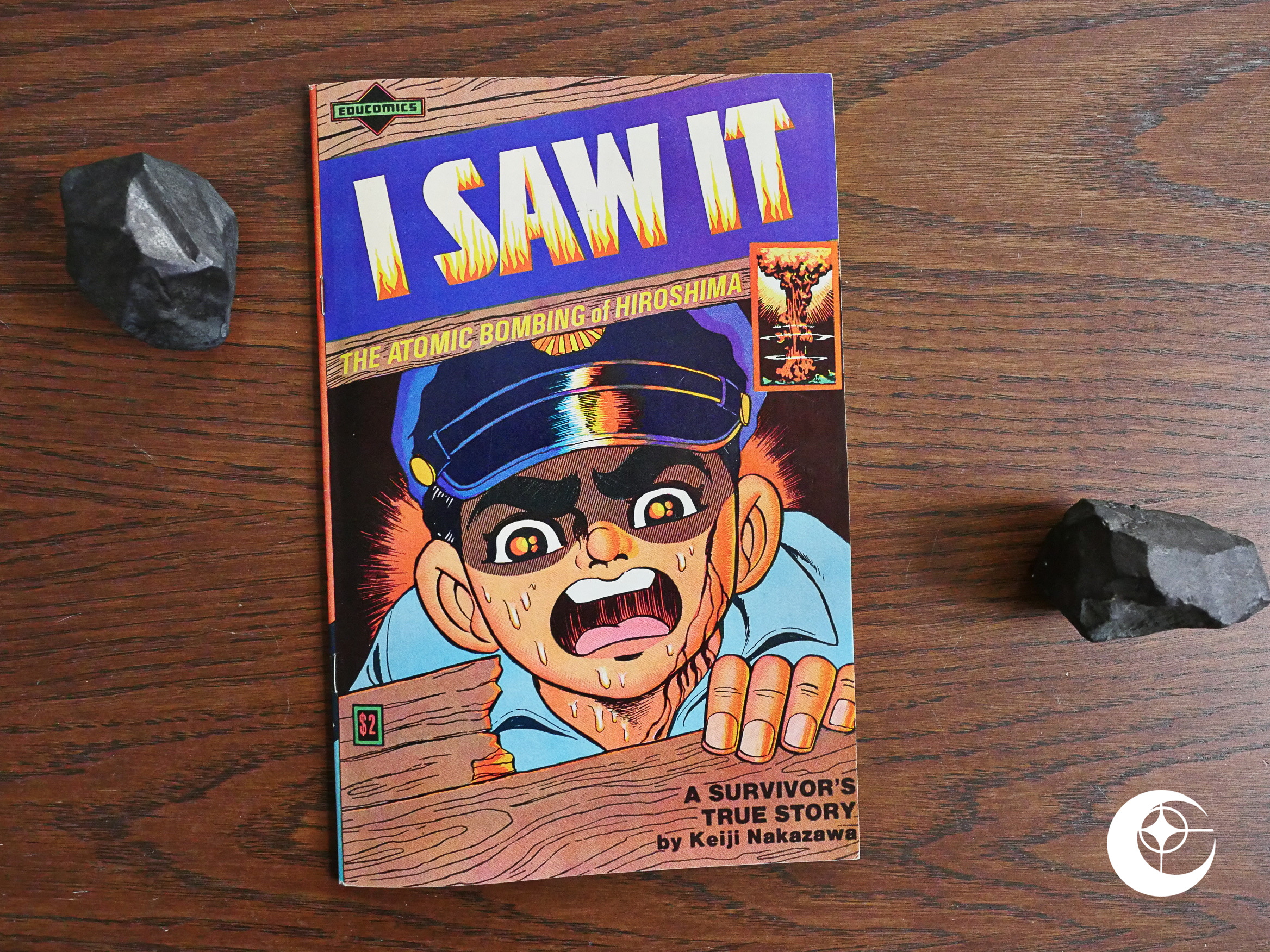
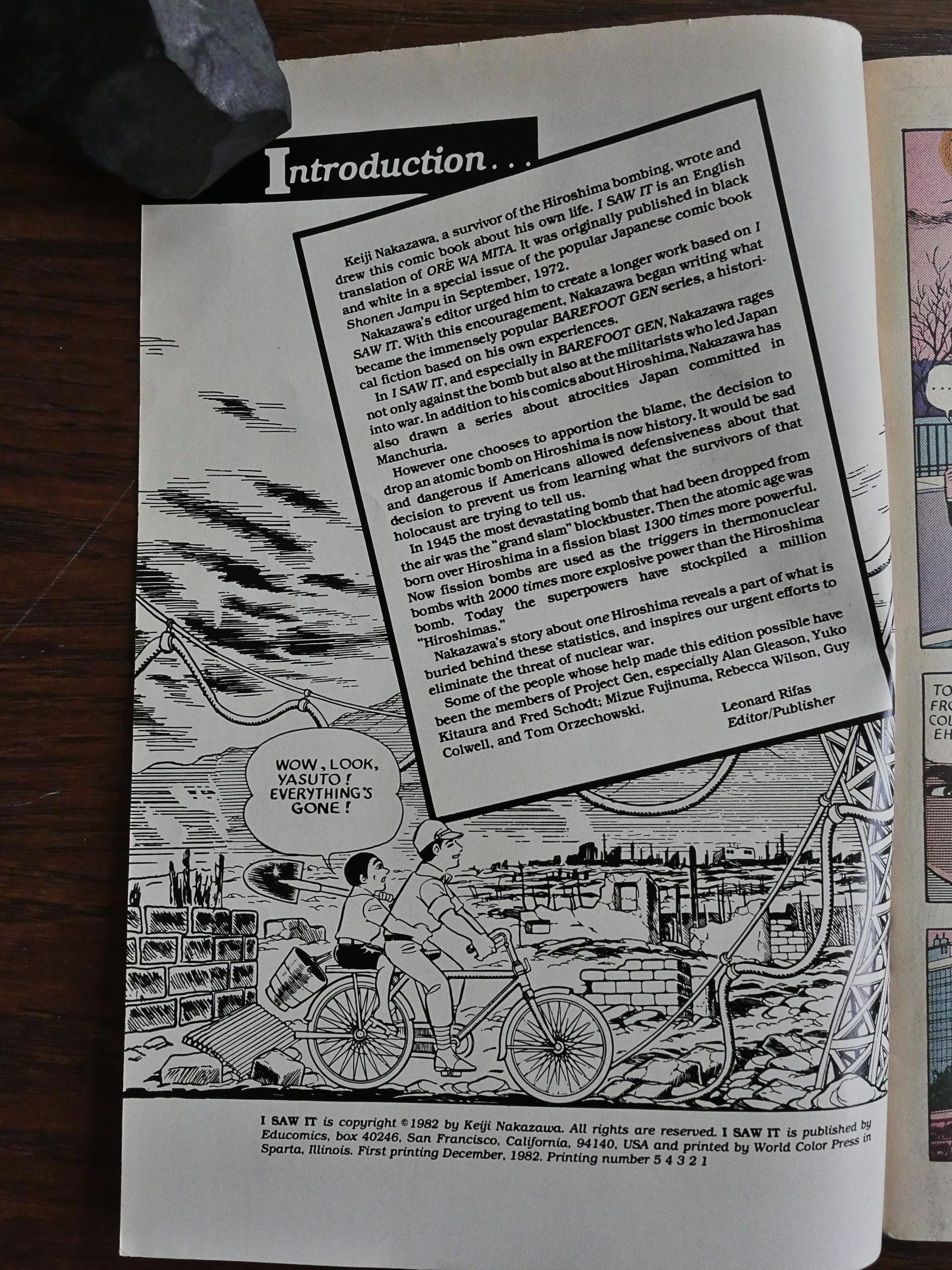
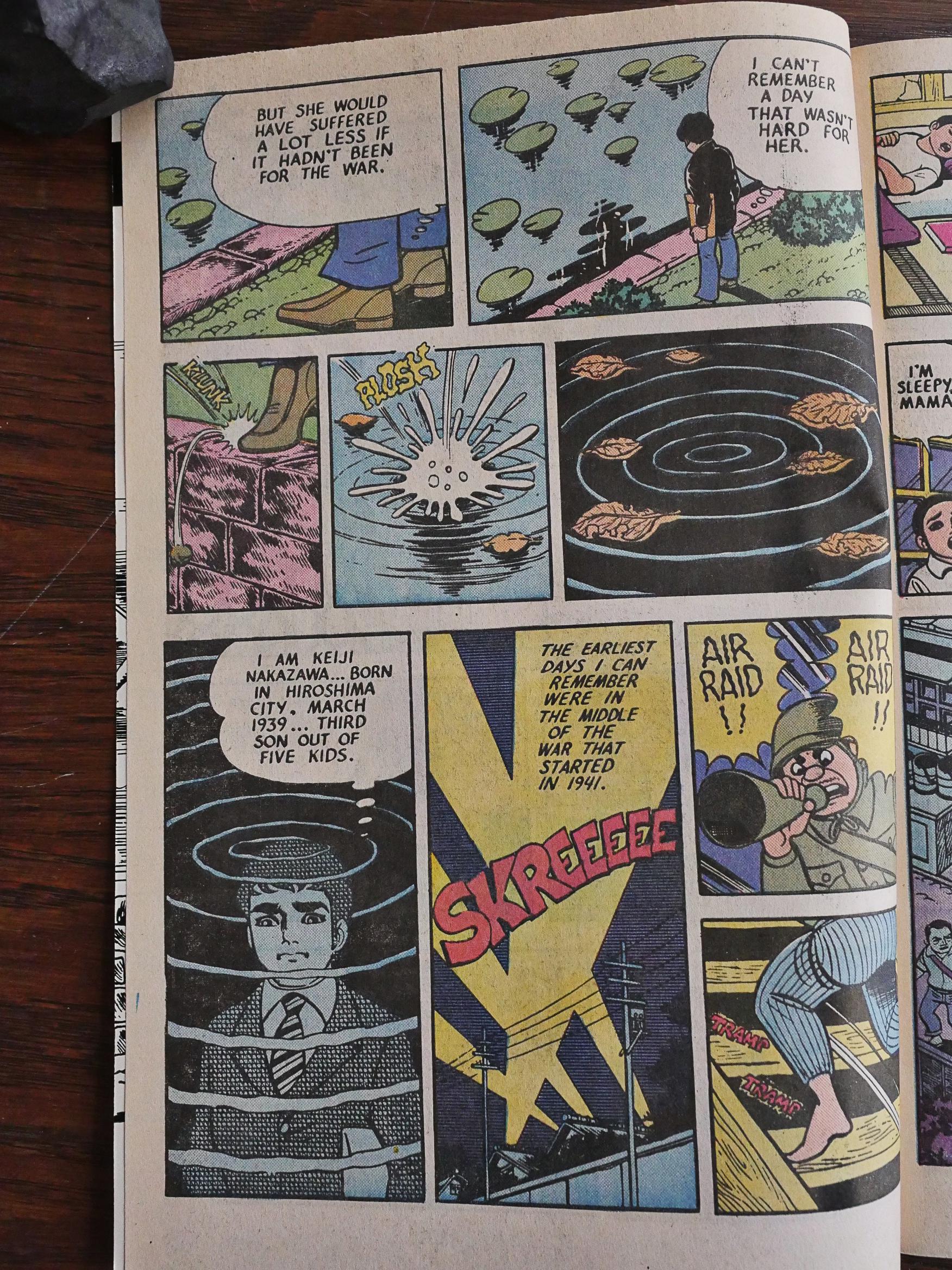
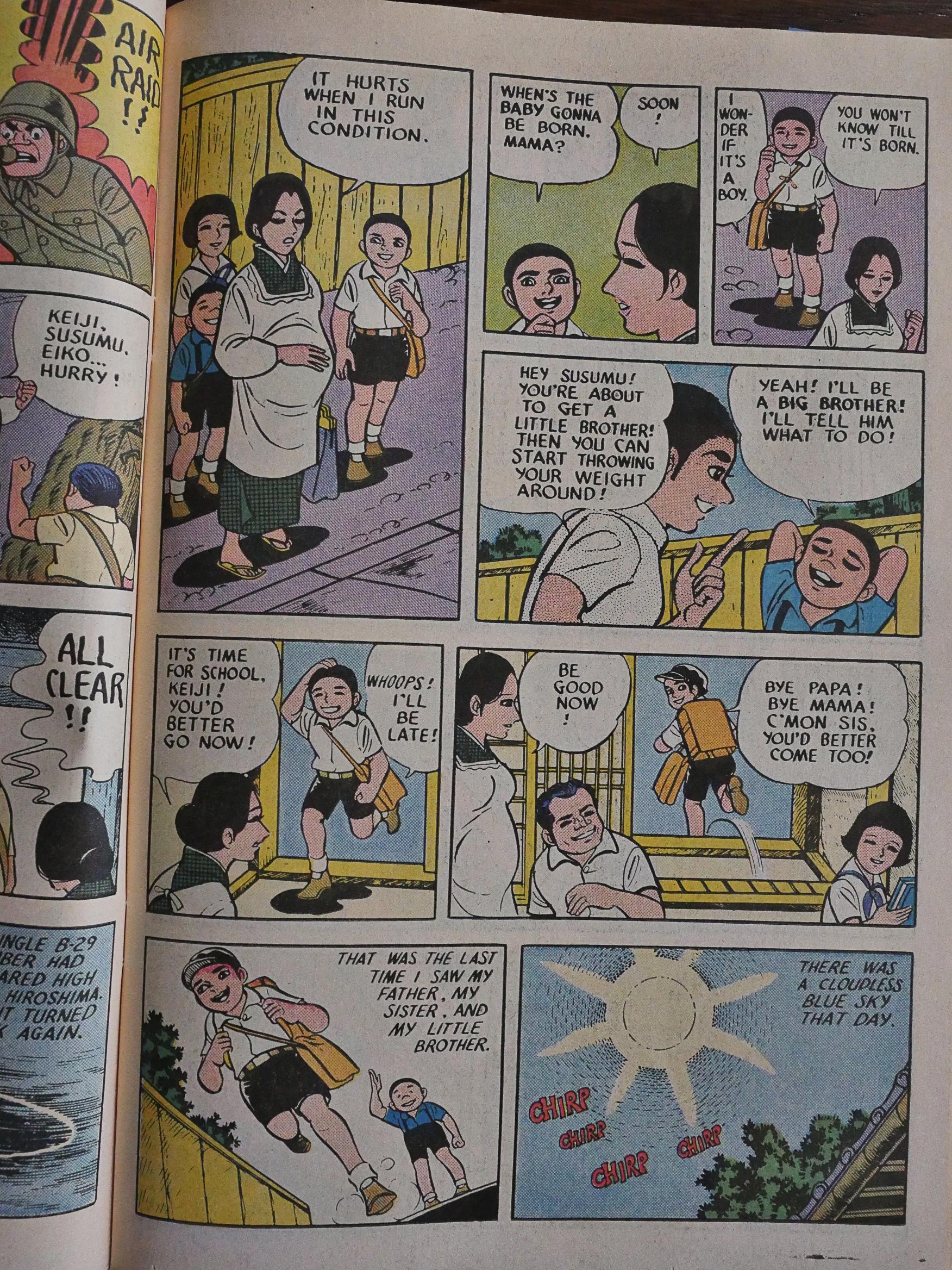
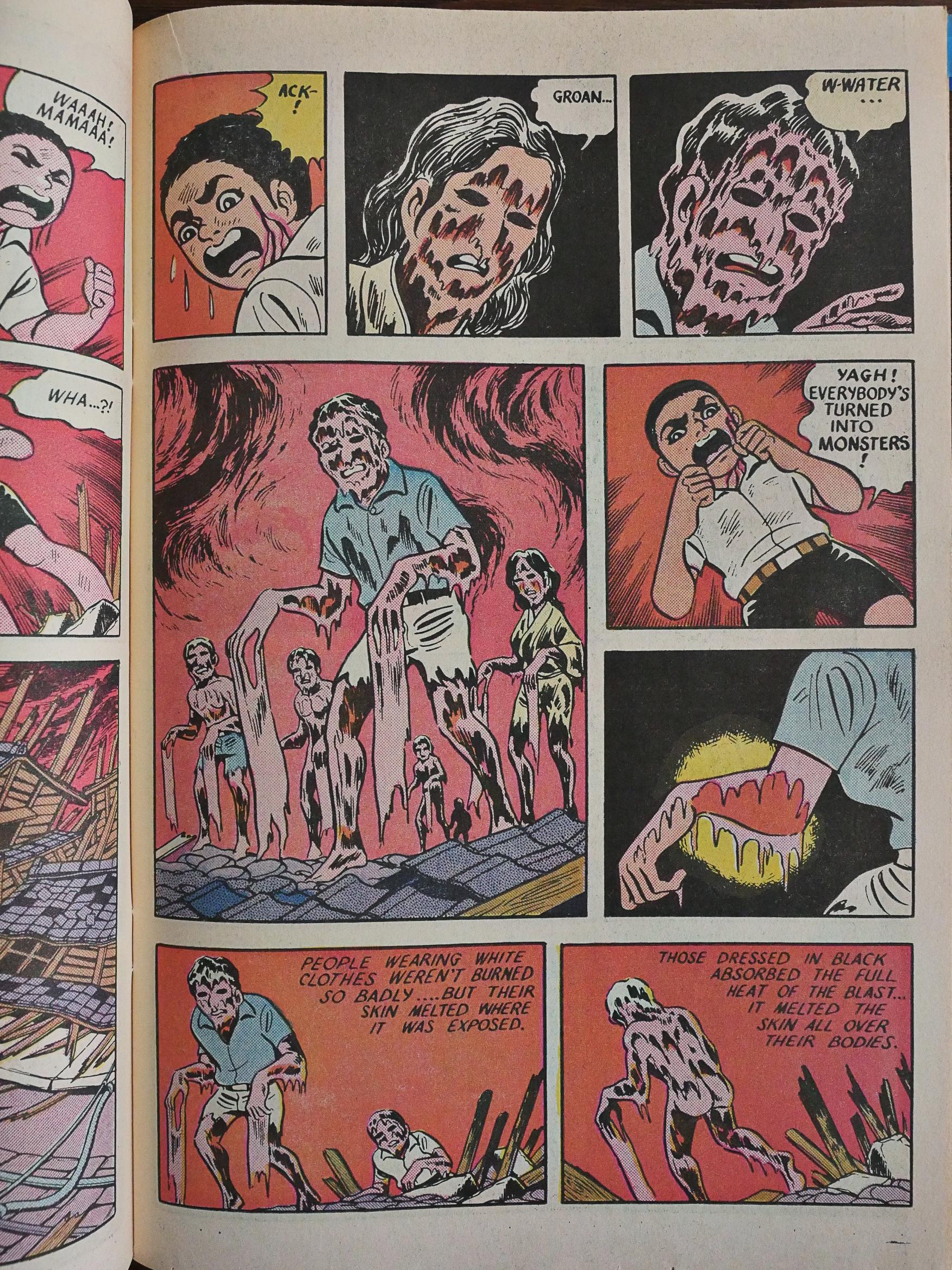
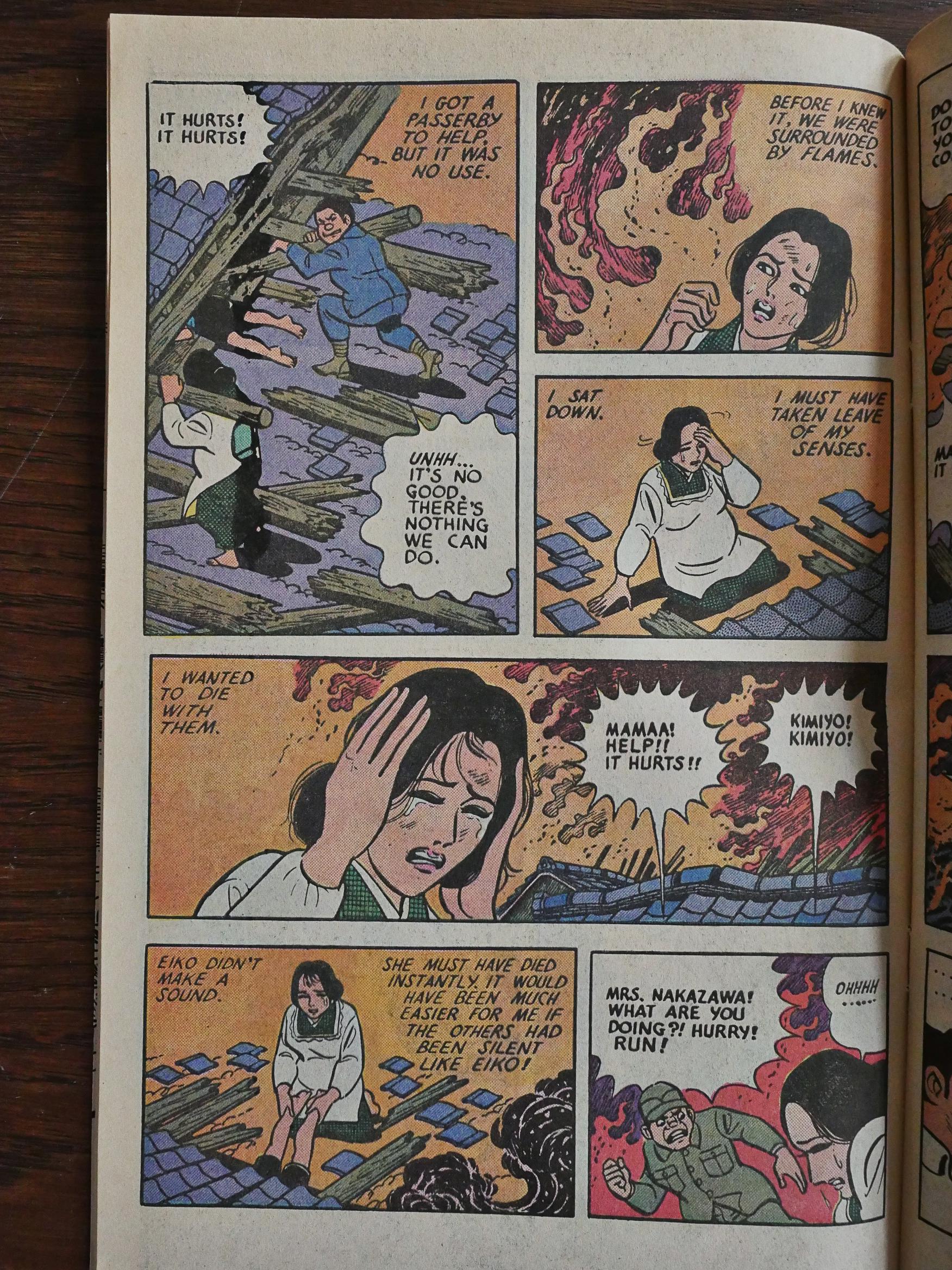
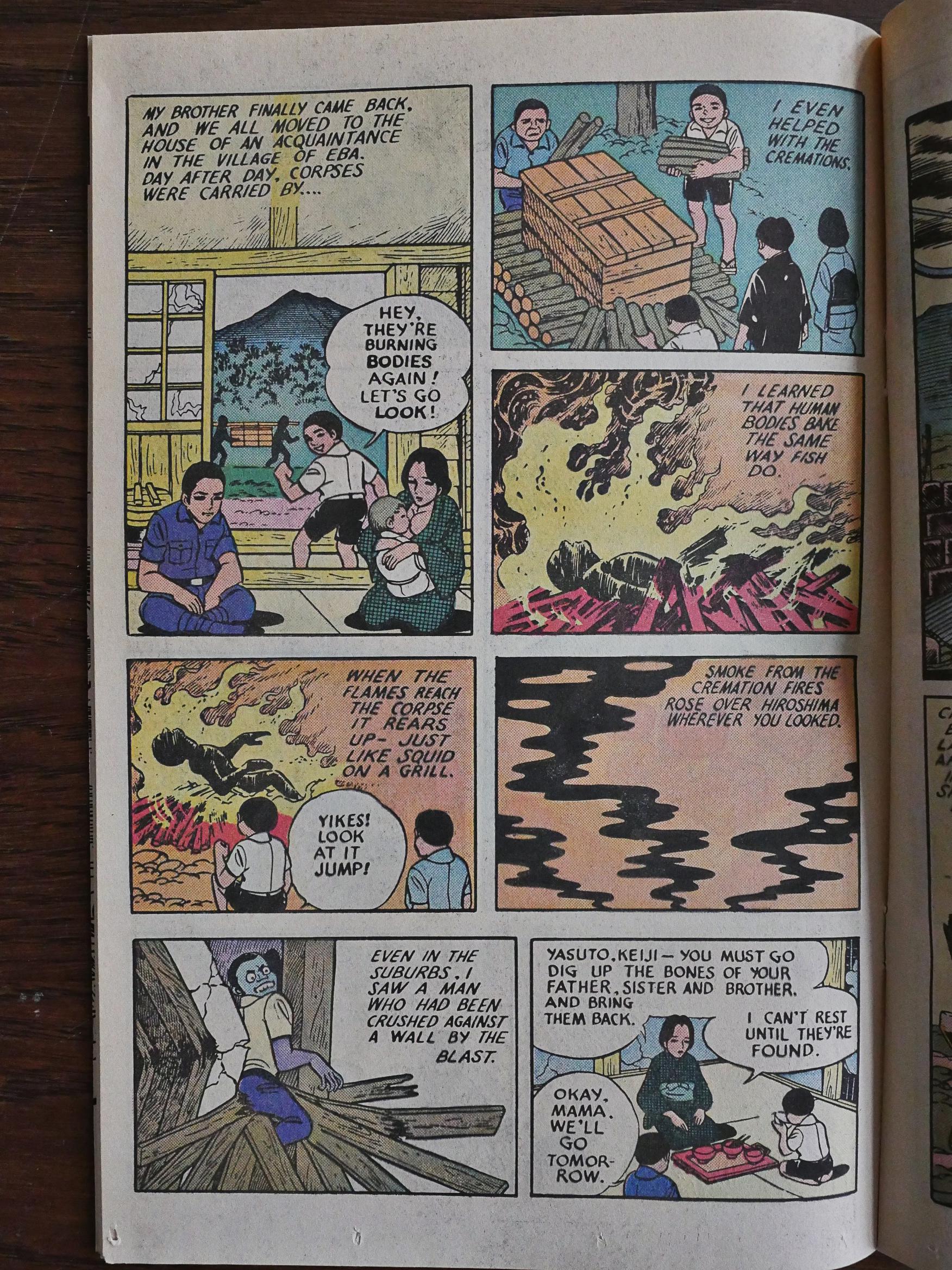
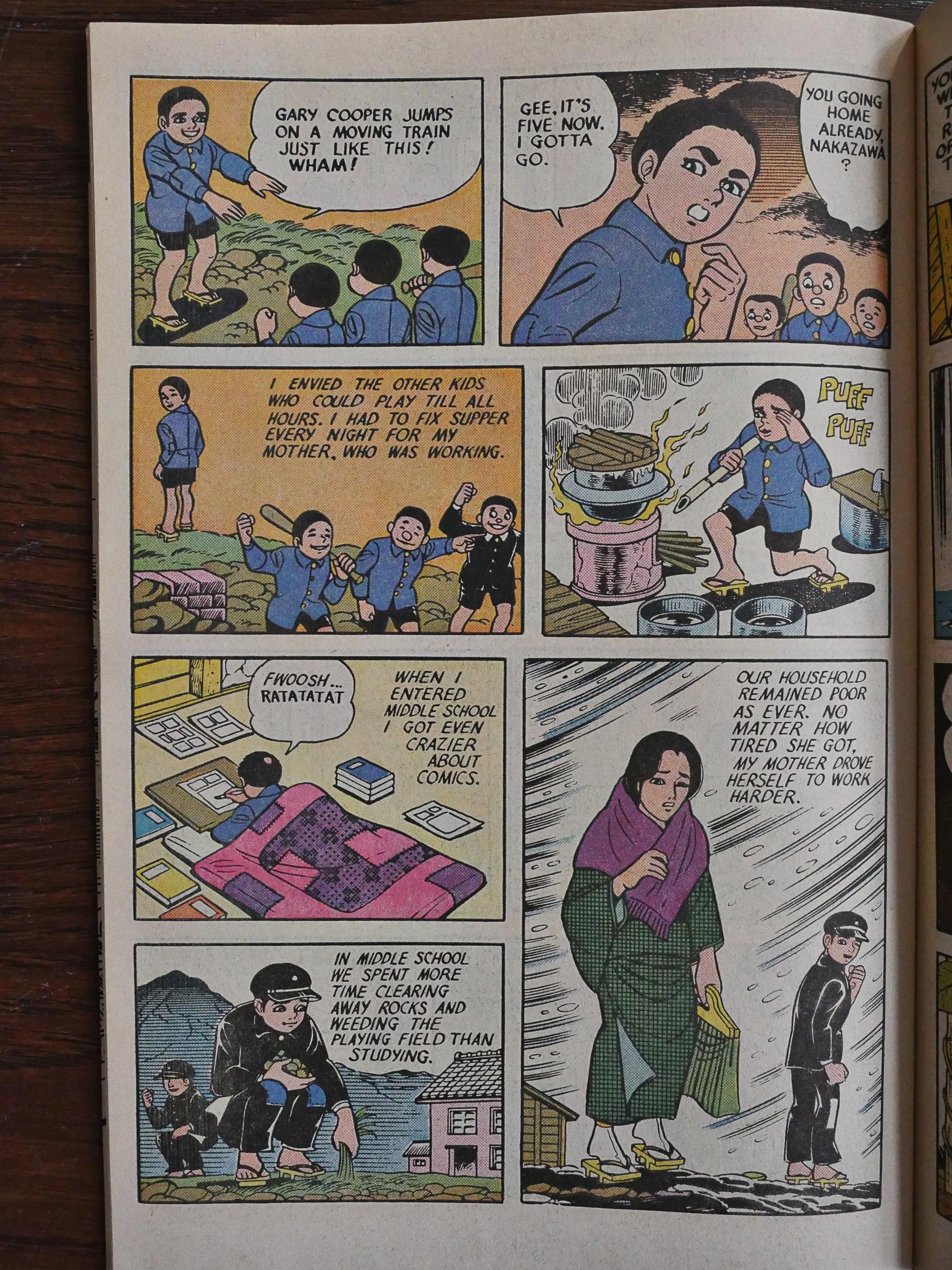
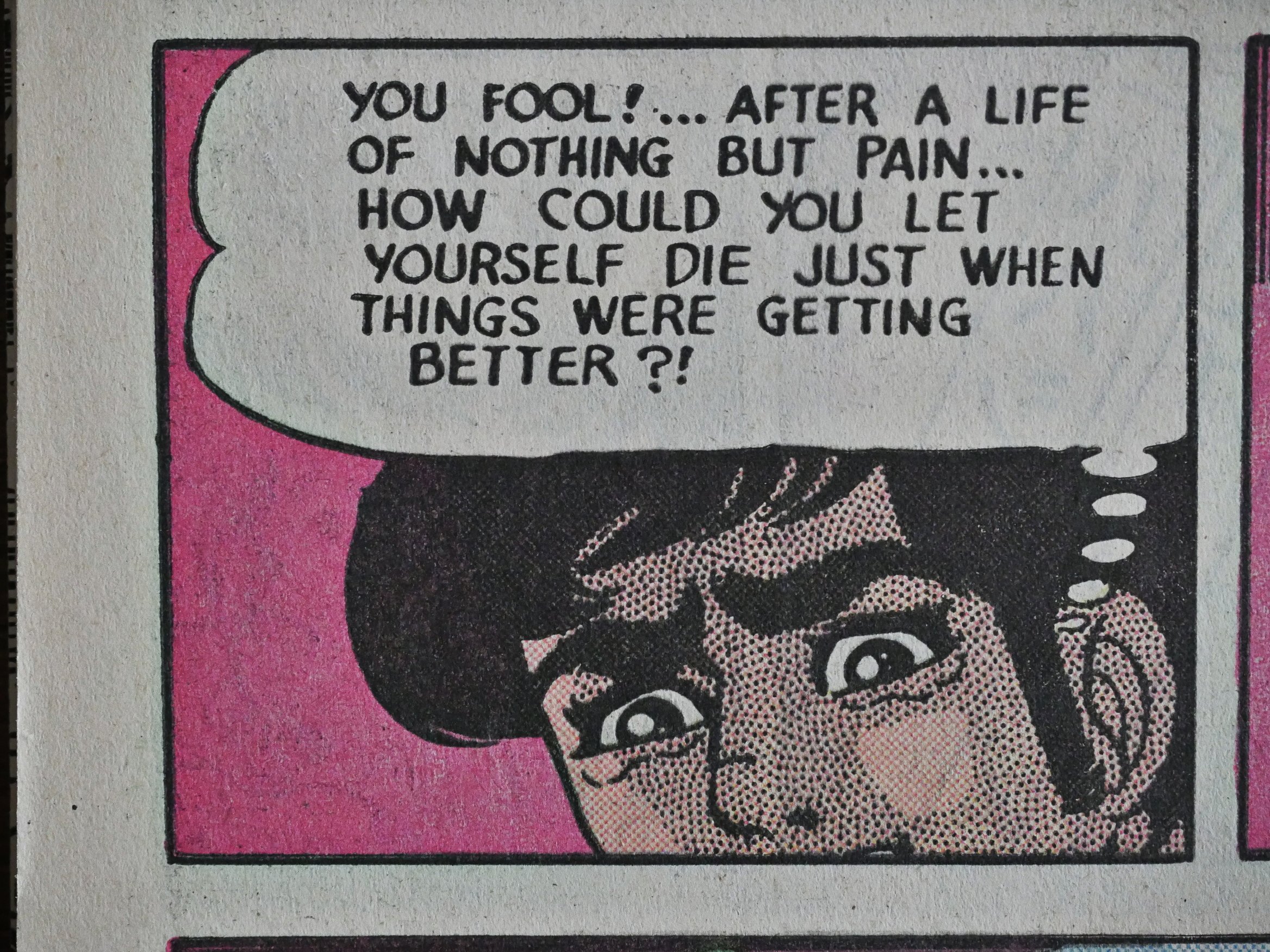
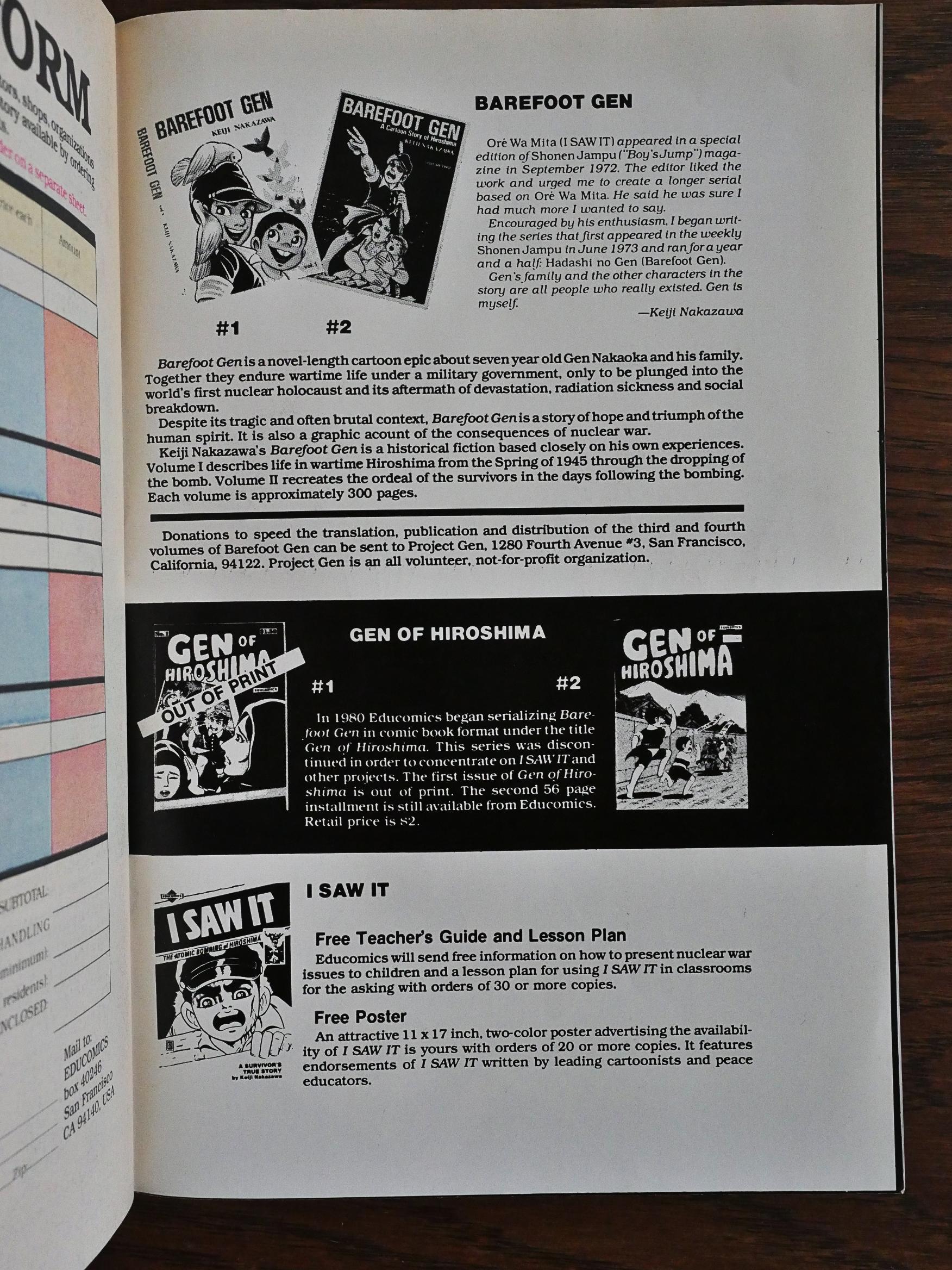
The movie version of Barefoot Gen, by Studio Ghibli, is much better but incredibly horrifying and depressing. Fun facts: from contemporary interviews with the author, part of the lesson Barefoot Gen was intended to sell isn’t so much war is bad, but ‘kids today don’t know how lucky they are and should toughen up’…